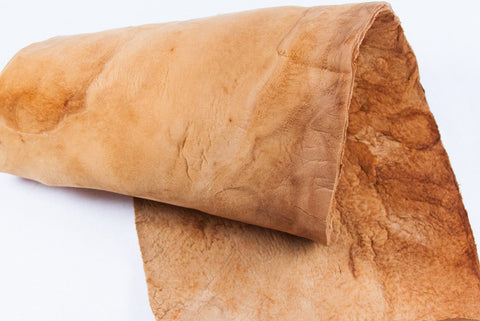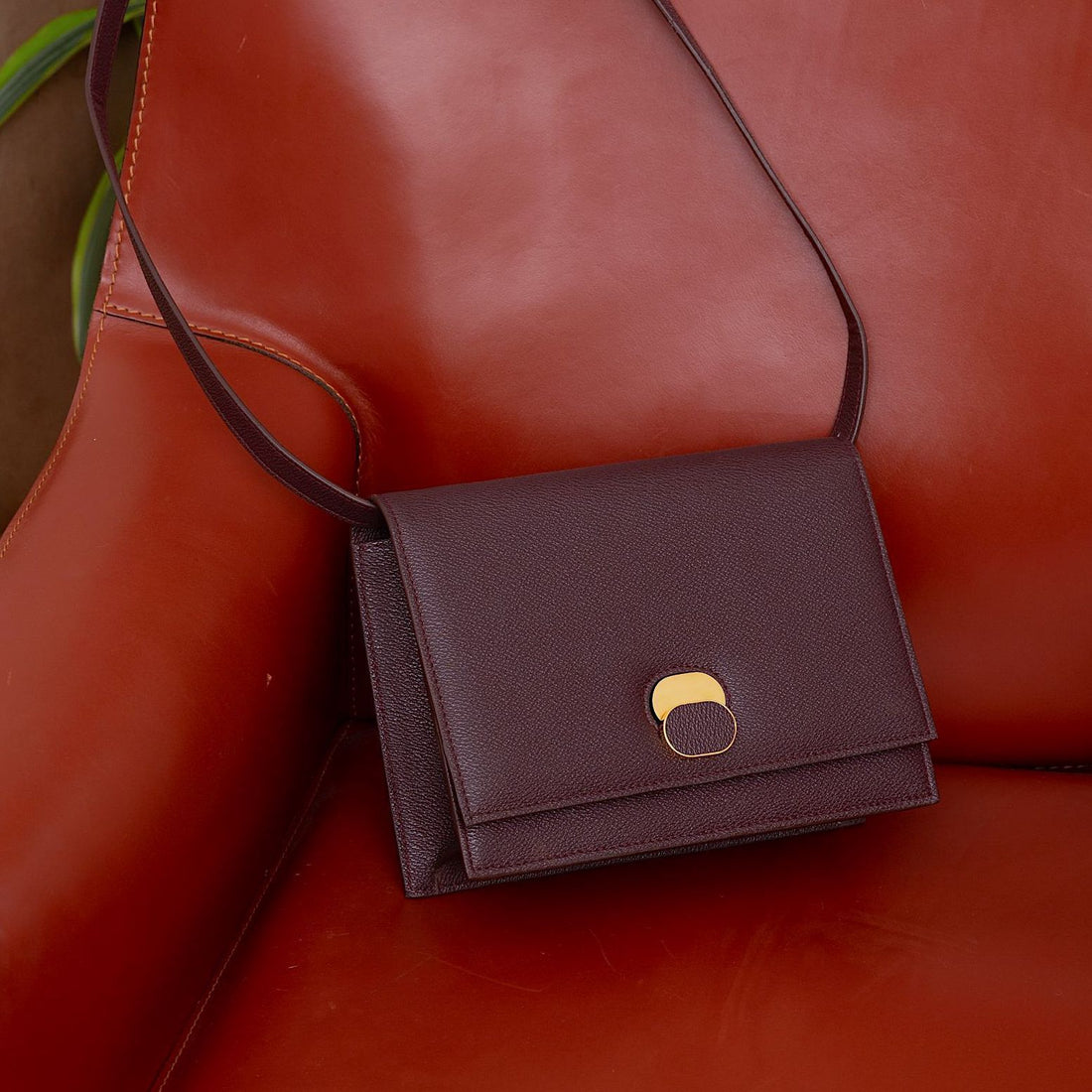At SOMEFANCYNAME.COM we believe that through your sustainable choices, you can empower a positive environmental impact and make the world a better place. Therefore, we try to keep up with the new innovative materials and make them available to you.
To our biggest regret, more than a billion pigs, cows, goats, sheep, alligators, ostriches, kangaroos, even dogs and cats are slaughtered for their skins every year. The livestock required to produce leather takes up the majority of the world’s farmland, producing high levels of greenhouse gas emissions and, as a result, contributing to climate change. That is why, we support veganism, not only for its environmental benefits, but mainly, because it does not hurt animals and offers a variety of ethical alternatives when it comes to fashion.
There is now a variety of innovative plant-based leathers being produced that reduce consumption by utilizing waste organic matter. Decreasing or eliminating the consumption of animal products is the single best thing an individual could do to help the planet. Therefore, in this article, we will focus on different types of vegan 'faux' leather. We will find out what exactly vegan leather is? How sustainable is it really? And will it last as long as animal leather?

What is vegan leather?
Vegan leather, known also as ‘fake leather’ is a material that looks like the animal leather, without any animals being directly exploited in the creation process. Vegan leathers utilize a number of synthetic and natural materials to imitate the appearance of a real leather. Nowadays, it is usually made from innovative and sustainable materials such as cork, pineapple leaves, apple peels or recycled plastic. In general, there are two types of vegan leather-synthetic vegan leathers and plant-based faux leathers.
Synthetic Leather
The two most common kinds of synthetic leather are Polyvinyl Chloride (PVC Leather) and Polyurethane (PU Leather). Polyurethane leather, known as pleather or Pu Leather, is made by laminating or applying a polyurethane coating to a base material such as cotton, nylon or polyester. Polyvinyl chloride, known as PVC or vinyl, is a versatile plastic that has an comprehensive list of applications. PVC is made in the same way as polyurethane. The resulting material is very similar to polyurethane leather in terms of aesthetic and composition. Good quality polyurethane and polyvinyl leathers are
- flexible
- durable
- resilient fabrics that can be used easily to a variety of products
- They also imitate the appearance of leather well
On the other hand, there are several cons of these materials. Polyurethane and Polyvinyl Chloride
- are made from non-renewable fossil fuels, which makes them unsustainable and un-biodegradable
- are characterised by rather poor longevity
Another type of synthetic leather is Recycled Plastic/Rubber. Much of a plastic and rubber waste can be treated and processed to form faux-leather materials, such as old car tires and plastic bottles. The great example of brand making products from recycled, durable alternative to leather is "CANUSSA".
We are proud to have Canussa in our community of sustainable designers. The brand uses an external fabric that, on top of being resistant and having the same appearance as leather, is recycled: 70% PES recycled , 20% corn polymer and 10% PU.
The brand is 'PETA Approved.' It produces beautiful accessories using highly resistant microfiber Oeko-Tex certified. It means the fabric they use has been tested and meets the required criteria to be considered an ecological fabric free of toxic substances, toxic to health. For the lining they use SEAQUAL® YARN which is is a 100% recycled material with full traceability (DNA tracer inside). It’s a high-quality, recycled polyester yarn made from recycled materials, including post-consumer plastic bottles and plastic captured from the sea. That’s why it contributes to preserving natural resources and reducing the carbon footprint.
Have you ever heard of "Premier" material by SiLeather? It is a high performance ‘leather’ made from silicone backed with polyester, making it a unique, non plastic, non-petroleum based material, by Sileather. It is a soft material made from 100% silicone, which is processed from natural quartz sand, one of the most common elements found in nature. "Nina Vegan Mini Handbag" from "Luxtra" was made of Sileather - Premier, available on our website.
Another leather alternative is Organeah: a non-woven, vegan textile made with recycled nylon. It is robust and water resistant. The bag below is PETA approved vegan product made of Organeah.
Plant-based Leathers
There are many plant-based leather alternatives available on the market nowadays. Some of them are still in the prototype phase, some of them have already been fashioned into commercially available products. We will start with a major players within the plant-based leather sector. An innovative faux-leather made from pineapple leaf fiber. Does it ring a bell? Yes, it's Piñatex!
It is an innovative vegan leather made from pineapple leaf fiber. As pineapple leaves are normally discarded after pineapple harvesting, Piñatex requires no additional raw environmental resources to produce. The material makes use of fibres from pineapple leaves, which are sourced from a plantation in the Philippines where they would eventually be burned or left to rot. The fibres are mixed with polylactic acid (PLA), a bioplastic derived from corn, to create a flexible and durable material. Although Piñatex is yet to be tested for true longevity, it has already been used by brands such Hugo Boss and Puma.
Moreover, Piñatex has become a by-product of Pineapple farming in the Philippines, providing a secondary income source for farmers and supporting their local economy. You can find some beautiful Piñatex accessories from "Benedita Formosinho", "Luxtra" or "Grelliz" brands on our website.
The strong example of sustainable material is definitely a Cork Leather. Cork leather is a material made from the bark of the cork oak tree. It stands out thanks to its high-durability and a unique look. It is characterised with scratch-resistance, stain resistance, and being easy to maintain. It is not so easy to produce Cork Leather. The cork oak tree needs to be 25 years old. Only when the tree reaches this age, cork producers harvest the bark for the first time. What's interesting, only the second one, done after 9 years, can be considered usable for the fashion purposes. There’s no need for the use of toxic chemicals in the process of cork leather production.
The oak tree is the only tree that survives even after the bark is stripped from the trunk. Furthermore, removing bark from oak trees encourages the plant to thrive and grow more. Cork leather lasts for about 20 years without any signs of deterioration. It is really sustainable, elastic, lightweight, hypoallergenic, anti-fungal and waterproof.
One of the brands from our community, "CorkLane" designs modern and functional fashion accessories from genuine cork leather. We believe that you don’t have to compromise your look on social responsibility. All of their products are carefully handcrafted in Portugal. This allows us to control the quality and design, whilst supporting the local economy. Encouraged and inspired by natural cork fabric, it is our aim to continue developing beautiful and stunning designs while using locally sourced cork material.
Have you ever heard of Apple Leather? It is real! Company from Copenhagen, "Beyond Leather", turned apples into leather. Pulp from the apple residue was treated, rolled out into strips, and heated resulting in a flexible, hardy material that is completely biodegradable. This material is derived from apple peels which are dried, powderized, and mixed with polyurethane and then being processed into a vegan leather. It is a great way to utilize waste product that would otherwise be discarded. The disadvantage of this material is that only "Beyond Leather" makes 100% apple leather, other producers of apple leathers require polyurethane in the process.
Similarly to Piñatex, it's longevity has not been well-tested yet. We are happy to say that one of our brands- LUXTRA is leading change in the fashion industry by using the most innovative sustainable materials to create understated accessories, such us Apple Leather or Piñatex.

Another vegetable-based leather alternative is MuSkin made from a fungus called Phellinus ellipsoideus. The caps of the mushrooms are processed and treated with natural substances like eco-friendly wax. This natural process results in a highly textured material that boasts an interesting grain similar to some animal leathers. MuSkin is a thermal insulator that absorbs damp and releases it immediately, it's highly breathable. This type of vegan leather is 100% natural, sustainable, biodegradable, and eco-friendly!

(Source: MuSkin Via Material District)
There are so many of new promising vegan leather alternatives out there. The great other examples are: Wine Leather, Mushroom Leather, Kombucha Leather and many many more. It seems like there are endless examples of innovative ways to replicate animal-leather in a cruelty-free and sustainable way. Taking everything into consideration, vegan leathers utilize a number of synthetic and natural materials without the need for the death or suffering of an animal.
While some of the synthetic vegan leathers, like polyurethane, are technically unsustainable, the plant-based innovations are helping to reduce the use of this finite resource. We hope that along with the veganism impact, advancements will be made, to make natural, sustainable faux leathers like MuSkin or Piñatex easily accessible on a mass scale. We cannot wait to see other innovations that could change the faux-leather market forever!














